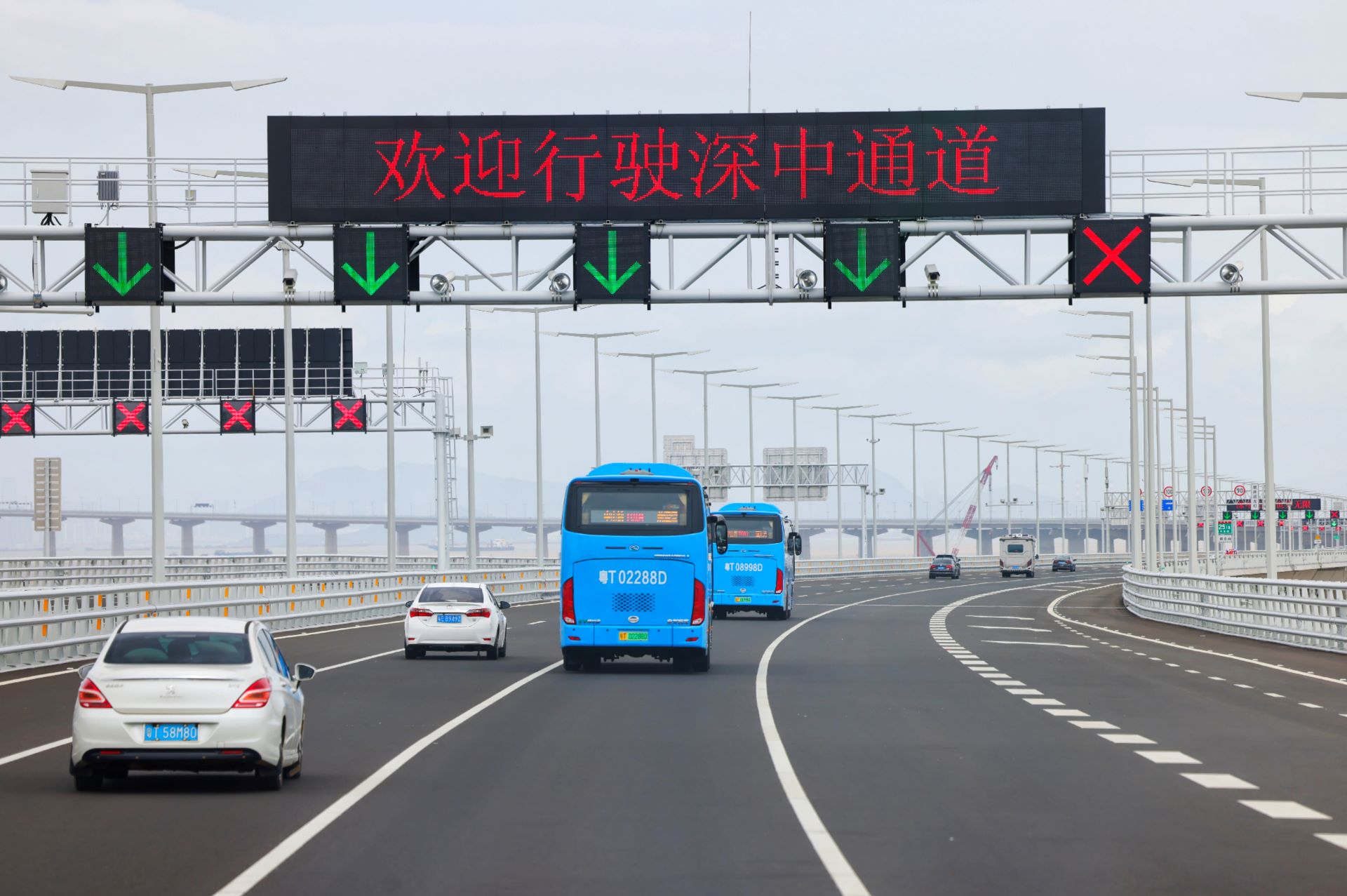
The Shenzhen-Zhongshan Link, connecting the two cities in South China's Guangdong province, is gaining immediate popularity among residents and businesspeople in the Guangdong-Hong Kong-Macao Greater Bay Area.
Data from Guangdong Transportation Group show that within the first 24 hours of operation, the traffic volume exceeded 125,000 vehicle trips; in the first 72 hours, 305,000. The daily traffic volume is projected to reach 100,000 vehicle trips.
READ MORE: Building bridges and making connections
The landmark project has slashed the journey time between the regions on the eastern and western banks of the Pearl River. This improvement in connectivity helps develop the Bay Area as a thriving living circle and injects momentum into the area's overall economic growth.
For instance, a Hong Kong native surnamed Chan lives in Zhongshan with his family and works in Hong Kong. Before the Shenzhen-Zhongshan Link opened, he returned to Zhongshan to visit his wife and children every two weeks.
"It used to take at least three to four hours to travel back and every time I got home, I was exhausted. With the opening of the Shenzhen-Zhongshan passage, I'll be able to visit Zhongshan more frequently," he said.
Furthermore, the passage assists interactions among three out of the province's five major metropolitan circles.
The Guangzhou, Shenzhen and the Pearl River estuary's west bank metropolitan circles essentially cover nine mainland cities in the Bay Area. Together the three contribute approximately 90 percent of Guangdong's five major metropolitan circles' GDP. Their combined permanent population accounts for more than 70 percent of the five circles' total. Through coordinated development, the economic benefits of the passage are expected to reach all cities in the Bay Area.
The opening of the Shenzhen-Zhongshan Link allows for more efficient industrial collaboration between the eastern and western regions across the Pearl River and opens the door to industrial synergy and integrated growth within the Bay Area.
Shenzhen, on the east bank of the Pearl River, is poised to establish itself as a leading global hub for advanced manufacturing. To this end, the city needs essential resources such as land from the regions on the west bank of the river to create fertile ground for its robust innovation capabilities, financial muscle and resource integration strength.
On the other hand, cities on the west bank of the Pearl River, including Zhongshan, are seeking to leverage the Shenzhen-Zhongshan Link to promote the integration of industrial and technological innovation on both sides of the river. They wish to build on Shenzhen's innovation advantages in resources, platforms and talent, to empower the transformation and upgrading of their own traditional manufacturing industries.
While Shenzhen is separated from the cities on the western bank by the Pearl River estuary, industrial collaboration between them has been closer since the construction of the mega project began seven years ago.
China Nuclear Power Technology Research Institute, headquartered in Shenzhen, has invested 2.5 billion yuan ($343.72 million) to establish a research base in Zhongshan.
In Zhuhai, another core city in the Pearl River estuary's west bank metropolitan circle, Shenzhen Shineyoung New Energy Technology has invested more than 2 billion yuan to build a new energy storage industry base in the city's high-tech industrial zone.
In Jiangmen, also on the west bank of the estuary, Shenzhen Top-Peak Electronics has targeted the extensive local agricultural market. The drone supplier from Shenzhen has poured 30 million yuan into setting up a base in Jiangmen and plans to extend its business to the agricultural drone market in western Guangdong and even the neighboring Guangxi Zhuang autonomous region.
This new economic cooperation model featuring "research on the eastern shore coupled with manufacturing on the western shore" has led to an increasing number of businesses forging close ties between Shenzhen and various cities on the western shore of the Pearl River.
ALSO READ: Xi sends congratulatory letter on opening of Shenzhong Link
For example, Shenzhen Xinyichang Technology is a company specializing in the manufacture of high-end intelligent equipment. It registered a subsidiary in Zhongshan in 2017 and began constructing a high-end intelligent equipment manufacturing base in the city a year later. By 2023, the Xinyichang-invested industrial park, spanning more than 70,000 square meters, was fully operational".
As the industrial park is less than 2 kilometers from the Zhongshan exit of the Shenzhen-Zhongshan Link, research and production will be more closely integrated, said Yuan Moli, an executive from the company.
On top of that, the passage assists in a convergence of two world-class technological innovation corridors: the Guangzhou-Shenzhen-Hong Kong region and the Guangzhou-Zhuhai-Macao region.
The journeys between the four major platforms for Guangdong-Hong Kong-Macao cooperation — Hengqin, Nansha, Qianhai and Hetao — have been shortened due to the opening of the Shenzhen-Zhongshan Link. This will enhance their role as engines to drive comprehensive cooperation among Guangdong, Hong Kong and Macao.


